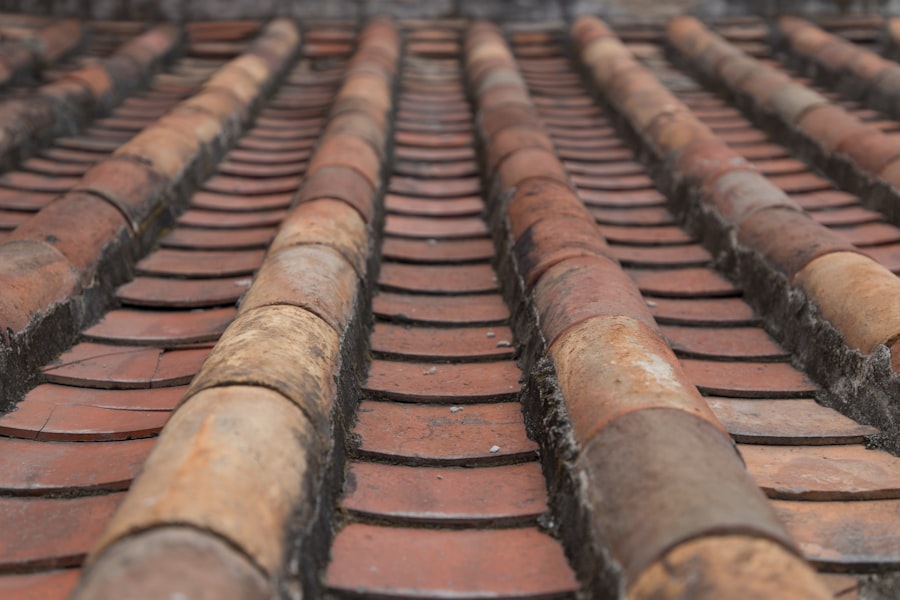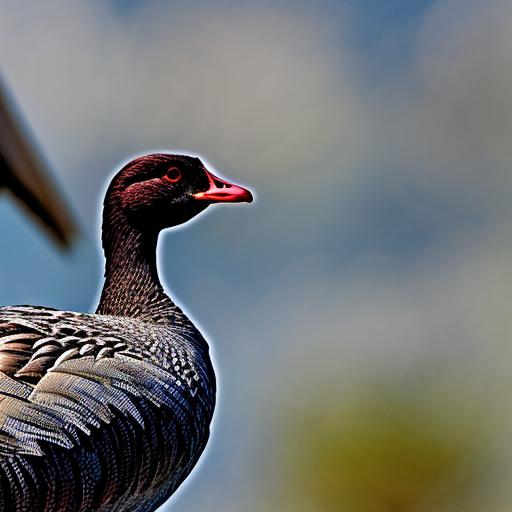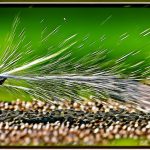Geese are naturally drawn to roofs for a variety of reasons. One of the main reasons is that roofs provide a safe vantage point for geese to keep an eye out for predators. Roofs also offer a flat and open space, which makes it an ideal landing spot for geese. Additionally, the warmth of the sun on a roof can be appealing to geese, especially during cooler weather. Furthermore, geese are attracted to roofs because they provide a clear view of potential food sources, such as grassy areas or bodies of water. The reflective surfaces of some roofs can also attract geese, as they mistake the reflection for water, which is a natural landing spot for them.
Another reason why geese are attracted to roofs is the lack of natural predators in urban and suburban areas. Geese have adapted to living in close proximity to humans, and as a result, they have become less fearful of human structures, including roofs. In addition, the lack of disturbance on roofs makes them an attractive nesting site for geese. The flat and open space of roofs provides an ideal location for geese to build their nests and raise their young without interference from predators or other disturbances. Overall, the combination of safety, warmth, food sources, and nesting opportunities makes roofs an attractive location for geese.
Key Takeaways
- Geese are attracted to roofs because they provide a safe vantage point and potential nesting sites
- Potential risks and damages caused by geese on roofs include structural damage, unsightly droppings, and noise disturbances
- Non-harmful methods to keep geese off roofs include using decoys, applying taste aversions, and planting deterrent vegetation
- Installing physical barriers such as netting, spikes, and angled surfaces can prevent geese from landing on roofs
- Using sound and visual deterrents such as lasers, predator calls, and reflective tape can discourage geese from landing on roofs
- Seeking professional help to remove geese from roofs may involve hiring wildlife control experts or installing humane trapping systems
- Long-term strategies for preventing geese from returning to roofs include habitat modification, landscape management, and implementing exclusion techniques
Potential risks and damages caused by geese on roofs
While geese may seem harmless at first glance, their presence on roofs can pose several risks and cause significant damages. One of the main risks is the accumulation of droppings, which can create unsightly and unsanitary conditions on roofs. The acidic nature of goose droppings can also corrode roofing materials over time, leading to costly repairs and maintenance. In addition, the presence of geese on roofs can create noise disturbances, especially during mating season when geese are more vocal.
Furthermore, the nesting habits of geese can cause structural damage to roofs. Geese build their nests using twigs, grass, and other materials, which can clog gutters and drainage systems, leading to water damage and leaks. The weight of nesting geese can also put strain on the roof structure, potentially causing damage or collapse. Moreover, the aggressive behavior of nesting geese can pose a threat to humans and pets who may inadvertently come too close to their nests. Overall, the presence of geese on roofs can lead to unsanitary conditions, structural damage, noise disturbances, and potential safety hazards.
Non-harmful methods to keep geese off roofs
There are several non-harmful methods that can be used to keep geese off roofs. One effective method is to modify the landscape surrounding the building to make it less attractive to geese. This can be achieved by installing barriers such as hedges or fences to create a physical barrier between the building and potential landing spots for geese. Additionally, planting tall grasses or shrubs around the building can create an unappealing environment for geese, as they prefer open spaces with clear lines of sight.
Another non-harmful method is to use repellents that deter geese from landing on roofs. These repellents can include visual deterrents such as scarecrows or predator decoys, as well as sound deterrents such as ultrasonic devices or noise-making devices. These deterrents work by creating a sense of danger or discomfort for the geese, making them less likely to land on the roof. Furthermore, using non-toxic chemical repellents or taste aversions on the roof surface can make it unappealing for geese to land or nest.
Installing physical barriers to prevent geese from landing on roofs
Installing physical barriers is an effective way to prevent geese from landing on roofs. One common physical barrier is bird netting, which can be installed over the roof to create a barrier that prevents geese from accessing the surface. Bird spikes can also be installed on ledges and edges of the roof to deter geese from landing or nesting. Additionally, installing sloped or angled surfaces on the roof can make it difficult for geese to land and walk comfortably, discouraging them from staying on the roof.
Another physical barrier that can be installed is a wire grid system that covers the entire roof surface. This grid system creates an uneven surface that is uncomfortable for geese to walk on, making it less appealing for them to land and stay on the roof. Furthermore, installing fences or barriers around the perimeter of the building can create a physical barrier that prevents geese from accessing the roof in the first place. Overall, installing physical barriers is an effective way to prevent geese from landing and nesting on roofs without causing harm to the birds.
Using sound and visual deterrents to discourage geese from landing on roofs
Sound and visual deterrents can be effective in discouraging geese from landing on roofs. One common visual deterrent is the use of predator decoys such as fake owls or hawks, which create a sense of danger for geese and make them less likely to land on the roof. Reflective objects such as shiny tape or balloons can also be used to create visual disturbances that deter geese from landing on the roof.
In addition to visual deterrents, sound deterrents such as ultrasonic devices or noise-making devices can be used to create a sense of discomfort for geese. These devices emit high-frequency sounds or loud noises that are unpleasant for geese, making them less likely to stay on the roof. Another sound deterrent is the use of recorded distress calls of geese or other bird species, which can signal danger and make geese more cautious about landing on the roof.
Seeking professional help to remove geese from roofs

In some cases, seeking professional help may be necessary to remove geese from roofs. Professional wildlife control experts have the knowledge and experience to safely and humanely remove geese from rooftops without causing harm to the birds. These experts can use specialized trapping and relocation techniques to capture and remove geese from the area. Additionally, they can provide advice on long-term strategies for preventing geese from returning to the roof.
Furthermore, professional wildlife control experts can conduct a thorough assessment of the building and surrounding area to identify potential attractants for geese. They can then recommend and implement effective deterrents and exclusion methods to prevent future issues with geese on the roof. Overall, seeking professional help is a responsible and effective way to address issues with geese on roofs while ensuring the safety and well-being of the birds.
Long-term strategies for preventing geese from returning to roofs
Implementing long-term strategies is essential for preventing geese from returning to roofs. One long-term strategy is habitat modification, which involves altering the landscape surrounding the building to make it less attractive to geese. This can include planting tall grasses or shrubs, creating physical barriers such as fences or hedges, and removing potential food sources such as open garbage containers or bird feeders.
Another long-term strategy is regular maintenance and upkeep of deterrents and exclusion methods. This includes regularly inspecting and repairing physical barriers such as bird netting or wire grids, as well as replacing or repositioning visual and sound deterrents as needed. Additionally, using non-toxic chemical repellents or taste aversions on the roof surface can provide long-term protection against geese.
Furthermore, implementing a comprehensive wildlife management plan that addresses not only geese but also other potential pest species can help prevent future issues with geese on roofs. This plan can include regular monitoring and maintenance of deterrents, as well as ongoing education and training for building occupants on how to minimize attractants for geese. Overall, implementing long-term strategies is crucial for preventing geese from returning to roofs and ensuring a safe and comfortable environment for both humans and wildlife.
Looking for effective ways to keep geese off your roof? Check out this insightful article on PoultryWizard.com that offers practical tips and solutions. From understanding the behavior of geese to implementing humane deterrents, this article provides valuable insights to help you protect your roof from unwanted avian visitors. For more helpful poultry-related articles, be sure to explore PoultryWizard’s resources on topics such as feeding ducks, chicken coop heaters, and garden chicken coops.
FAQs
What are some effective methods to keep geese off the roof?
There are several effective methods to keep geese off the roof, including installing bird spikes, using visual deterrents such as reflective tape or scarecrows, and employing sonic deterrents that emit sounds that are unpleasant to geese.
Why is it important to keep geese off the roof?
Keeping geese off the roof is important to prevent damage to the roof and gutters, as well as to maintain a clean and safe environment. Geese droppings can also pose health risks and create unsightly messes.
Are there any humane methods to keep geese off the roof?
Yes, there are humane methods to keep geese off the roof, such as using visual and sonic deterrents that do not harm the geese but simply discourage them from landing on the roof.
What are some potential risks of having geese on the roof?
Having geese on the roof can lead to damage to the roof and gutters, as well as create unsanitary conditions due to their droppings. Additionally, geese on the roof can pose a safety hazard if they become aggressive or territorial.
Can professional help be sought to keep geese off the roof?
Yes, there are professional services that specialize in bird control and can provide effective solutions for keeping geese off the roof. These services may include installation of deterrents and ongoing maintenance to ensure the effectiveness of the methods used.
Meet Walter, the feathered-friend fanatic of Florida! Nestled in the sunshine state, Walter struts through life with his feathered companions, clucking his way to happiness. With a coop that’s fancier than a five-star hotel, he’s the Don Juan of the chicken world. When he’s not teaching his hens to do the cha-cha, you’ll find him in a heated debate with his prized rooster, Sir Clucks-a-Lot. Walter’s poultry passion is no yolk; he’s the sunny-side-up guy you never knew you needed in your flock of friends!







